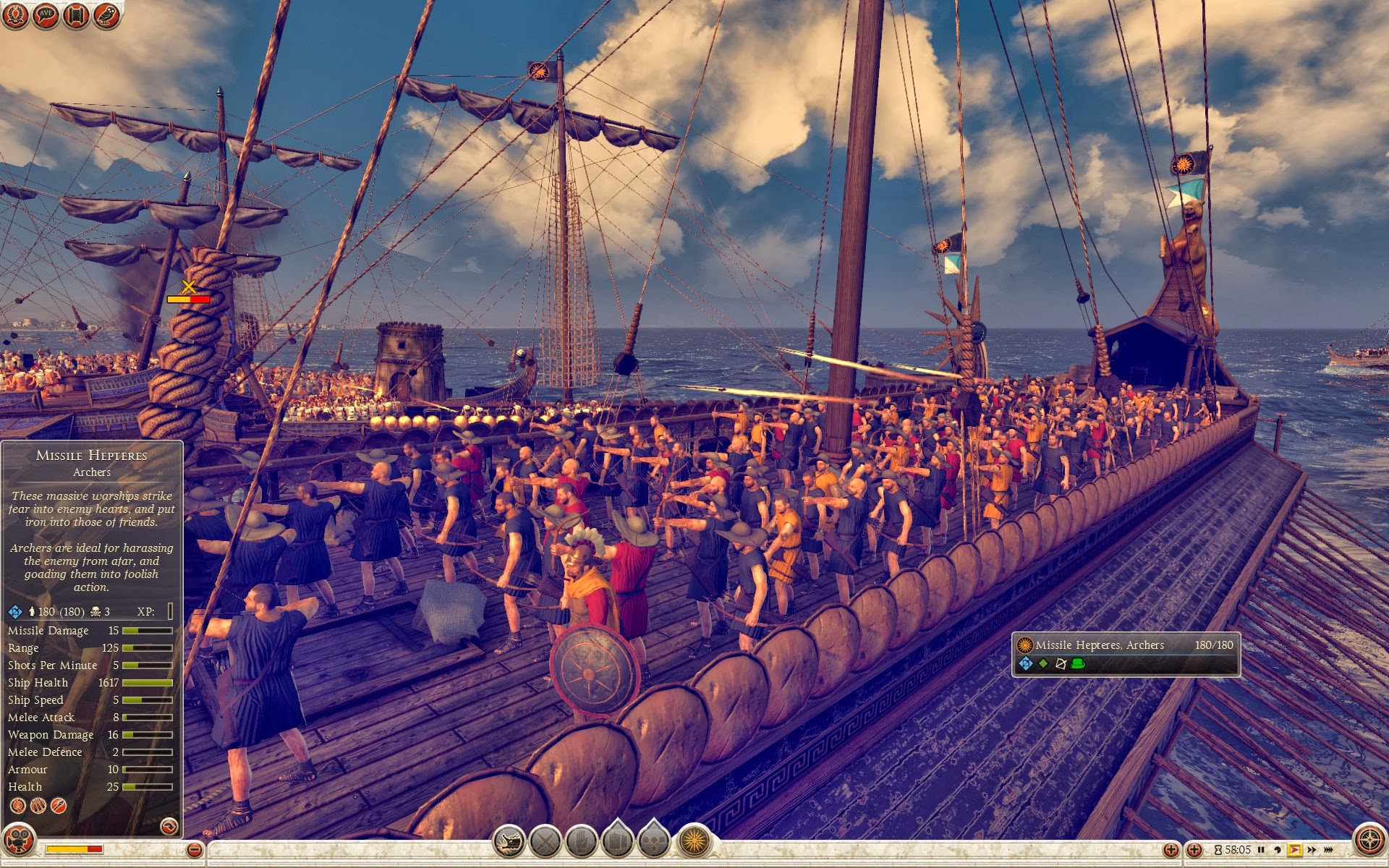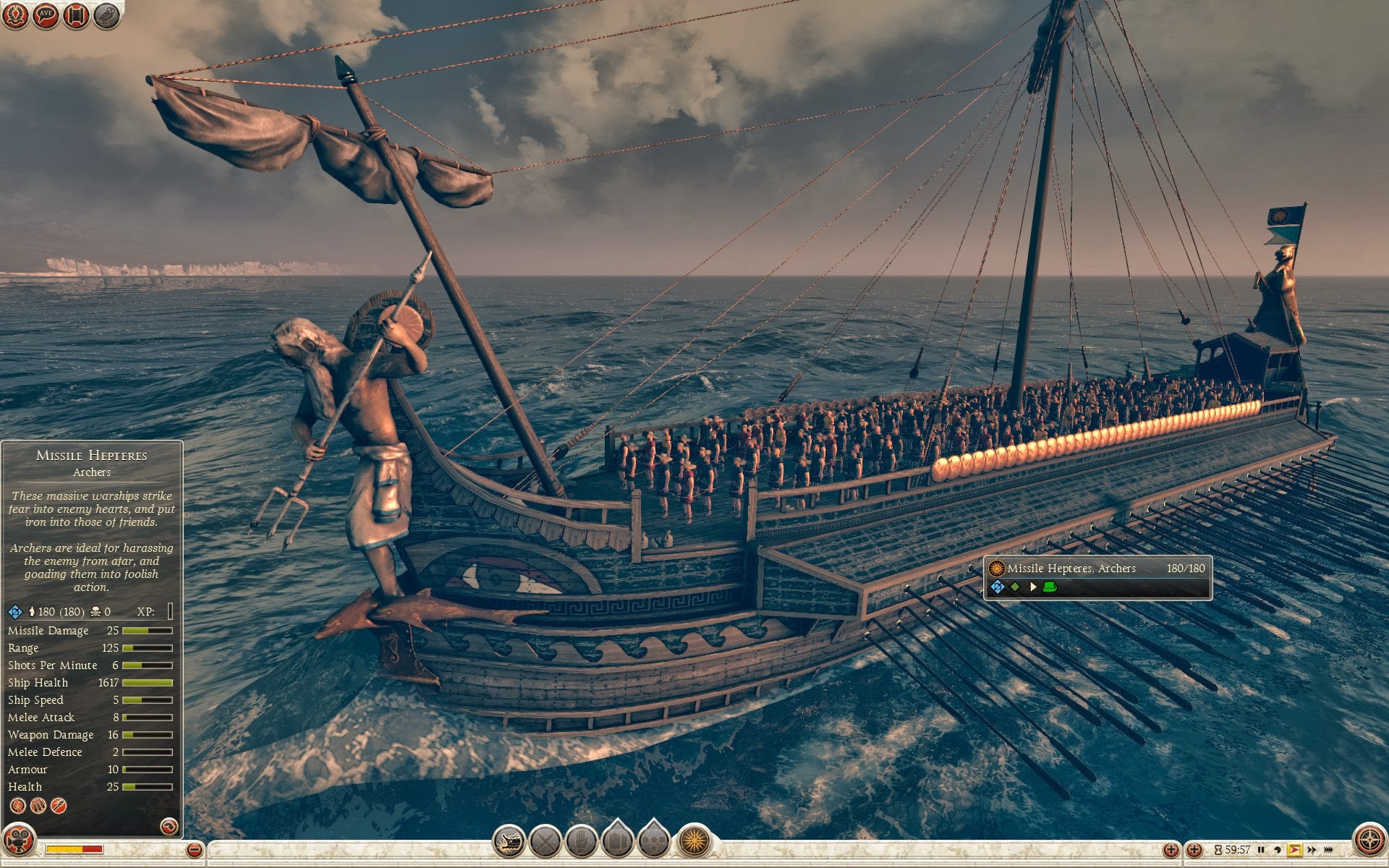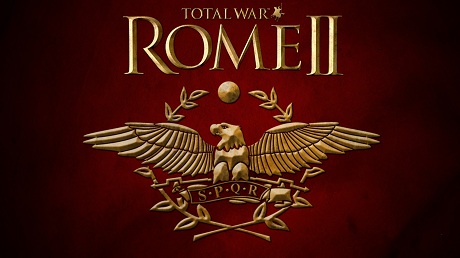Missile Hepteres - Archers
These massive warships put iron into their crews' hearts, and strike fear into the enemy's.Archers are ideal for goading the enemy into foolish action.
An arms race in warship size developed between the various nations around the Mediterranean. Size, in terms of the number of rowers, ships length and bulk and above all majesty of the vessel became as much a tool of statecraft as of warfare. A people who could afford such ships were almost certainly rich enough to withstand the strains of any war. A 'four' or quadreme was still a handy warship, able to manoeuvre in battle. The same could not be said of some of the large polyremes, a word meaning many oars. Practical archaeology shows that too many banks of oars simply don't work, so polyreme probably referred to the number of rowers: an octeres is likely to have had some eight rowers per bank of three oars, arranged in three, three, and two to an oar going up from the waterline. King Demetius of Macedon led his fleet at the battle of Salamis in 306BC from the deck of a hepteres or 'seven', but his ambitions didn't stop there. Neither did those of other kingdoms, and later lumbering warships including 'elevens', 'thirteens' and larger. As bigger ships to carry more rowers such vessels could also carry big marine contingents, arrow towers and an array of useful artillery.
(Archers)
Although archery was not highly thought of as a military skill in Greece, Crete produced truly excellent archers who were able to sell their services to the highest bidder as mercenaries. Firing bronze-tipped arrows from their heavy self bows, Cretan archers tended to carry shields, indicative of some additional prowess in melee, which must’ve made them an even more enticing proposition for a general hiring mercenaries for campaign. Their finest hours came when Alexander the Great hired Cretans directly into his army to support its unbeatable phalanx. Commanded by Clearchus, 500 Cretans accompanied the Macedonian phalanx into battle at Granicus, off-setting the Persians' numerical superiority on the day and enabling Alexander’s subsequent victory. Whereas the Romans didn’t traditionally use archers in their forces, once they conquered Greece Cretan archers began to appear as auxiliary troops in their armies. Notably, they fought in Caesar’s campaign in Gaul against Vercingetorix, causing him to rally the best archers the tribes could provide to range against them.
Unit Name Missile Hepteres - Archers |
Main Unit Key Gre_Archers_Seven |
Land Unit Key Gre_Archers |
Naval Unit Key greek_seven |
Soldiers 180 |
Category Heavy Ship |
Class Missile Ship |
Custom Battle Cost 1130 |
Recruitment Cost 1130 |
Upkeep Cost 226 |
Missile Damage 35 |
├ Missile Weapon rome_bow |
├ Projectile arrow_normal |
├ Missile Damage 31 |
├ Missile Ap Damage 4 |
└ Base Reload Time 12 |
Accuracy 5 |
Range 125 |
Reload 13 |
Shots Per Minute 6 |
Ammunition 15 |
Ship Health 1617 |
└ Ship greek_seven |
Ship Speed 5 |
Melee Attack 8 |
Weapon Damage 24 |
├ Melee Weapon rome_shortsword |
├ Melee Damage Base 20 |
├ Melee Damage Ap 4 |
├ Armour Piercing No |
├ Bonus vs. Large 0 |
├ Bonus vs Elephants 0 |
└ Bonus vs Infantry 0 |
Charge Bonus 3 |
Melee Defence 12 |
├ Base Defence 12 |
├ Shield none |
└ Shield Defence 0 |
Armour 10 |
├ Armour cloth |
├ Armour Defence 10 |
└ Shield Armour 0 |
Health 45 |
├ Man Entity rome_infantry_very_light |
├ Man Health 40 |
└ Bonus Hit Points 5 |
Base Morale 25 |
Abilities
Missile Hepteres- Row Hard 30
Increases speed for 30 strokes.
Ship speed
Attributes
- Resistant to Fatigue
Fatigue has less of an effect on this unit. - Hide (scrub & forest)
This unit can hide in scrub and forest until enemy units get too close.
Strengths & Weaknesses
Missile Hepteres- Exceptional hull strength
- Very heavy crew
- Very slow speed
- Strong ramming
- Good boarding
- Very good missile combat
- Long range
- Average rate of fire
- Good damage but low armour penetration
- Very weak in melee
- Very poor morale
| Faction Availability | |
|---|---|
| Grand Campaign | |


 Français
Français Italiano
Italiano Deutsch
Deutsch Español
Español Русский
Русский Čeština
Čeština Polski
Polski Türkçe
Türkçe 简体中文
简体中文 正體中文
正體中文 日本語
日本語


